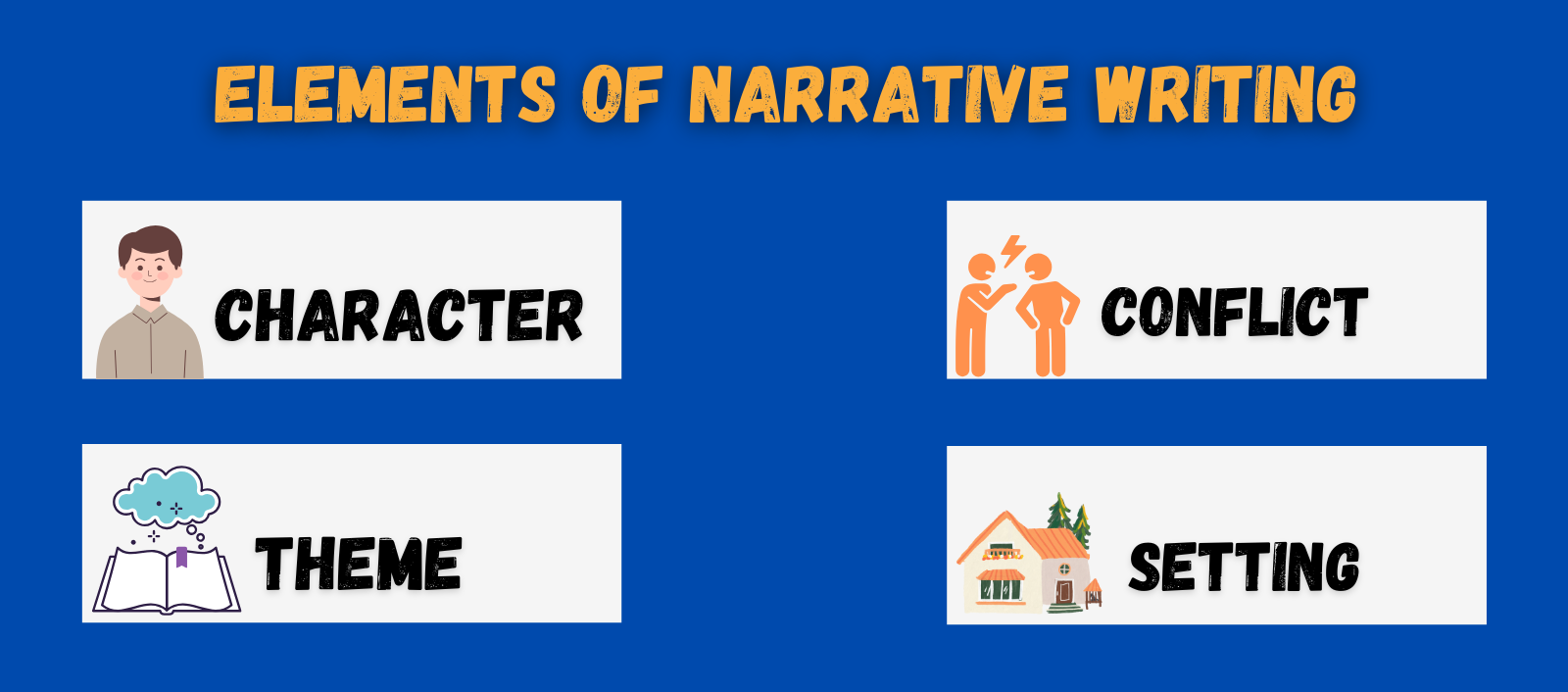Hey there! So, you want to know about the elements of narrative writing? Great! Imagine these as the building blocks of your story. First, there’s the plot – the sequence of events. Then, we have characters – the people or beings in your tale.
The setting is where it all happens. Conflict brings drama and challenges. Finally, the theme is the deeper message. Together, these elements shape your story. Let’s explore each one in detail!
Elements Of Narrative Writing
Narrative writing is all about telling a story. It could be based on real events or purely from your imagination. The key elements of narrative writing include:
- Plot: The sequence of events that happen in the story.
- Characters: The people, animals, or beings who take part in the story.
- Setting: The location and time where the story takes place.
- Conflict: The challenges or problems the characters face.
- Theme: The underlying message or main idea of the story.
Think of it like creating a movie in written form. Your goal is to engage the reader and take them on a journey through your narrative. Does that make sense?
Plot
The plot is the structural framework of your narrative. It involves the sequence of events that make up your story, beginning with an introduction, followed by rising action, a climax, falling action, and finally, the resolution. Think of it as the roadmap that guides your story from start to finish.
For instance, in J.K. Rowling’s “Harry Potter and the Sorcerer’s Stone,” the plot begins with Harry discovering he is a wizard. This revelation sets the stage for a series of events including attending Hogwarts, making friends and enemies, and uncovering the truth about his parents’ death.
The climax occurs when Harry faces Voldemort to protect the Sorcerer’s Stone. The resolution ties up loose ends, leaving readers anticipating Harry’s next adventure.
Characters
Characters breathe life into your story. They can be people, animals, or fantastical creatures. Well-developed characters have distinct personalities, backstories, and motivations. They evolve through the narrative, facing challenges that force them to grow and change.
Take, for example, Elizabeth Bennet in Jane Austen’s “Pride and Prejudice.” Elizabeth is intelligent, witty, and headstrong. Her interactions with Mr. Darcy and the evolving dynamics between them drive much of the plot.
Through her relationships and experiences, Elizabeth learns to overcome her prejudices and better understand herself and others.
Setting
The setting provides the physical and temporal context for your narrative. It includes the location, time period, and atmosphere in which your story unfolds. A vivid setting can enhance the mood, support the plot, and shape characters’ actions and attitudes.
In F. Scott Fitzgerald’s “The Great Gatsby,” the setting is the Roaring Twenties in New York. The opulent mansions of East Egg and the vibrant parties at Gatsby’s mansion reflect the extravagance and moral decay of the time.
The setting is not just a backdrop but a critical element that influences the characters’ lifestyles and the story’s themes.
Conflict
Conflict is the driving force of a narrative. It introduces tension and challenges that characters must face and overcome. Conflicts can be internal (within a character) or external (between characters or against a larger force).
For example, in Suzanne Collins’ “The Hunger Games,” Katniss Everdeen faces external conflict against the oppressive regime of Panem.
She also deals with internal conflict, grappling with the moral implications of killing other tributes to survive. These conflicts drive the narrative forward, keeping readers engaged and invested in the outcome.
Theme
The theme is the underlying message or central idea of your narrative. It is the deeper meaning or commentary about life, society, or human nature that you wish to convey through your story.
In Harper Lee’s “To Kill a Mockingbird,” the theme of racial injustice is central. Through the eyes of young Scout Finch, the narrative explores the deep-rooted racism in the American South.
Themes of innocence, moral growth, and empathy are also woven into the story, prompting readers to reflect on these issues long after they’ve finished the book.
Why Choose Tutorhelpme English Tutors
Expert Tutors: Highly qualified English tutors and experienced in teaching.
Personalized Lessons: Tailored to meet individual learning needs.
Flexible Scheduling: Lessons available at convenient times for you.
Interactive Learning: Engaging methods to make learning fun and effective.
Exam Preparation: Specialized support for exams like IELTS, TOEFL, and SAT.
Affordable Rates: Competitive pricing for quality education.
Online Support: Access to lessons from the comfort of your home.
Progress Tracking: Monthly updates on your learning progress.
Resource Materials: Comprehensive study materials provided.
Customer Support: Friendly and responsive assistance whenever needed.
Read More Types of Narrative Writing
FAQ’s
What is the most important element of a story?
Every element is crucial, but conflict is the driving force of a compelling narrative. It creates tension, develops characters, and keeps readers invested.
How do you develop strong characters in a narrative?
Give characters distinct traits, motivations, and personal growth. A well-developed character should evolve based on their experiences in the story.
What is the difference between theme and plot?
The plot is the sequence of events in a story, while the theme is the deeper message or central idea the story conveys.

